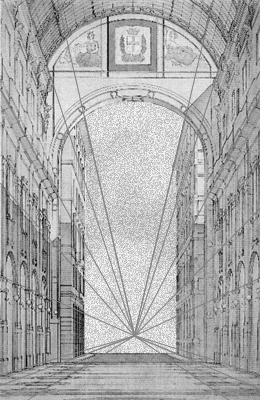Continuity in Architecture hosted an afternoon of guest lectures on Thursday 26 October. Three speakers brought the clear light of practice into the stygian unknowingness of the Cordingley Lecture Theatre and demonstrated to an intent audience that the field of design in the built environment need not be abandoned to the shrill purveyors of ‘iconic’ architecture. Here was work from Scotland, Ireland, England, Wales and Italy as at home in metropolitan contexts as in rural ones, and as coherent as it was diverse.

Clive Albert of Malcolm Fraser Architects, Edinburgh, led the charge with a withering attack on a well-known architectural fashion victim (just in case any dullards in the audience had found themselves in the wrong place) a feisty attitude which was echoed by the subsequent speakers. What followed was a confident discussion of a growing body of work related to arts organisations, infused with the inspiration which comes from the poetic and the choreographic, united by the motif of the cascading section. These projects culminated with the Newcastle Dance City building (above), a daring raid south which displayed a degree of sophistication sadly lacking in other, more prominent, London–designed, additions to the geordie cityscape.

The afternoon was anchored by Yvonne Farrell of Grafton Architects in Dublin who braved a blustery Irish Sea to tell the audience about the practice’s Bocconi University building (above & below) currently on site in Milan. Developing from a series of educational projects for schools and universities in Ireland, the Milanese will be treated to a robust and complex slab of city where ribbons of office space hang over a submerged lecture theatre, with the public realm providing the glue. The materialisation of this formidable structure was described in terms of skyscape and groundscape and promises an exemplary demonstration on how the city should interact with academe.

Closing these discussions, the context broadened out to a wider horizon with the work of Robert Camlin of Camlin Lonsdale Landscape Architects. From a base in Llangadfan in mid-Wales the practice has produced urban regeneration projects in Liverpool, Dublin and Manchester which read from the ‘book of the land’ to tie together history and topography, activity and texture in multilayered compositions. Despite these achievements the most tantalising project remains the unbuilt project for the walled garden of the National Botanic Gardens of Wales (below), with its rigourously organised typology of landscape.

The themes which emerged for the benefit of the students present from the roughness of the event was the need for the persistent exploration of proposals through drawing and model, however modest in their materials, and the need to base that work on a relationship to others rather than indulging the self.















